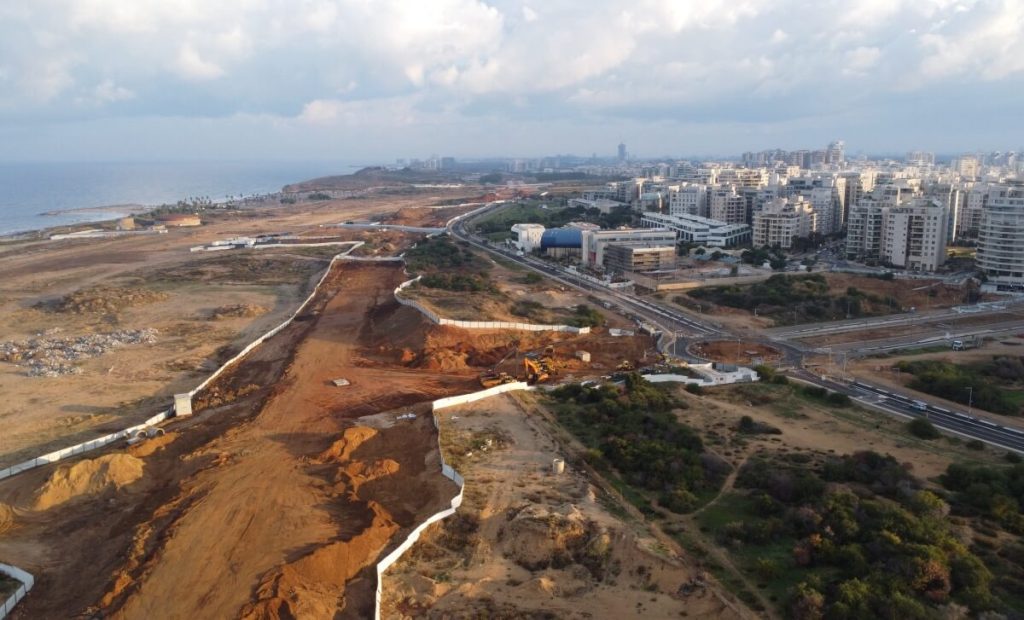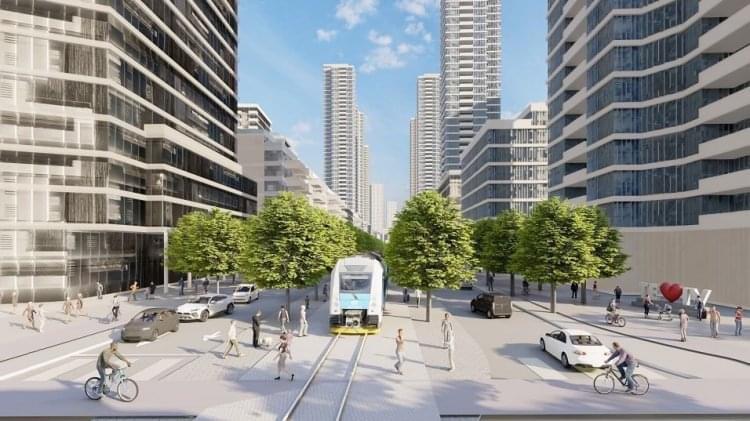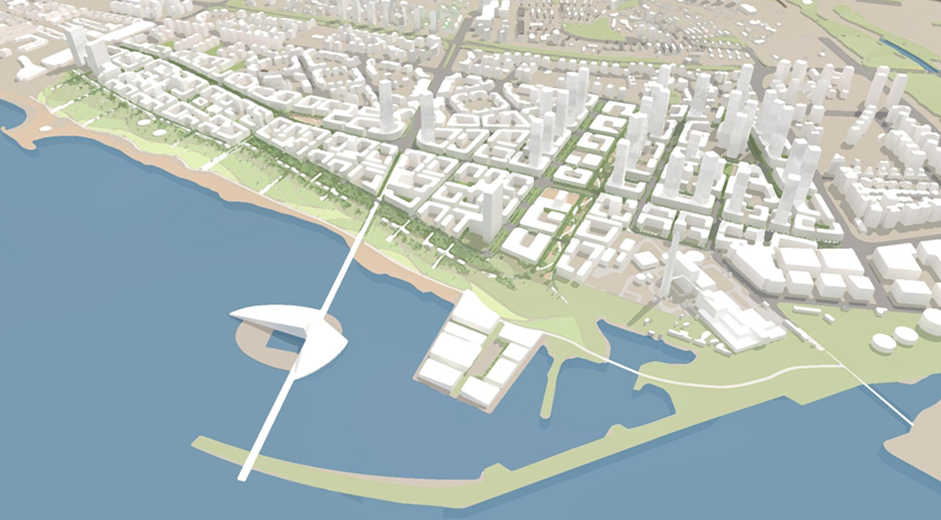Sde Dov district – a new residential district in North Tel Aviv
In 2010, a government decision was made to close Sde Dov airport in order to allow the development of a new residential district. The Sde Dov district is planned as an bustling urban district that combines residential buildings with a total of about 16,000 housing units, commercial and employment areas, public buildings and parks as well as advanced public transportation infrastructures.
The area on which the district will be built, spanning about 1,500 dunams, is one of the last areas on Tel Aviv's waterside intended for residential use. The district plan includes spacious parks along the coast, a promenade, water sports centers, a marina and hotels.
The boundaries of the district: the beach to the West, Propas Street to the North, Levy Eshkol Street to the East and Shay Agnon Street to the South. The adjacent neighborhoods – the Kochav Hazafon to the South, the Lamed and Nofey Yam neighborhoods to the East, and the Chen area to the North-East.
Of the 16,000 housing units in the district, about 4,500 have been designated as special purpose housing units and can be used for sheltered housing, student dormitories, rental housing, and the like. About 500 thousand square meters were allocated for the construction of public buildings, about 125 thousand square meters for commercial areas, about 330 thousand square meters for employment areas and about 125 thousand square meters for hotels. Public gardens and parks will cover approximately 365 dunams.
The airport was closed, its operation was discontinued in 2019 and its evacuation was completed at the beginning of 2020. The first tender for marketing land to developers in the southern part of the district (Eshkol complex) was published in the first quarter of 2021.
The Sde Dov district will complete the urban texture of the northwest of the city, it will make the beach accessible to the nearby neighborhoods and it will be characterized by intensive urbanism while combining various uses. For the residents of the new district, an opportunity will be created for a diverse and interesting urban life.



Construction in the Sde Dov district
During the year 2022, development works began in the district; during the first phase the works focus on the Eshkol complex – the first complex to be built, in the southeastern part of the district, and on the tram way that is expected to cross the district.
The results of the first land auction in Sde Dov were published in August 2021. The auction referred to four complexes and the entrepreneurs, who won were: AVISROR MOSHE & Sons Company, the MOR Group, ISRAEL CANADA and LEVINSTEIN ENGINEERING in partnership with ALLIED REAL ESTATE and MIVNE REAL ESTATE (K.D) LTD.
In 2022, the CLAUDE NAHMIAS company won additional land in the Eshkol complex, as well as the SHIKUN & BINUI company, which won two complexes for the construction of long-term rental housing. In total, land that will enable the construction of approximately 2,650 housing units has been sold to developers so far.
The sale of apartments in the first projects began in 2023 and the first building permit was received in March 24 for the Rainbow project by the ISRAEL CANADA company.
Let's get to know the Sde Dov district
Walking distance from the beach
From all directions of the Sde Dov district, the walking distance to the beach is very short. A spacious park and promenade are planned along the beach that will ensure easy and open access for all residents to the sea.
Proximity to the communities north of the city
The Sde Dov community will join a variety of quality communities that currently characterize the northern Tel Aviv area. Surrounding the district are the Kochav Hazafon, the Lamed and Nofey Yam (the large block), the new Ramat Aviv and the old Ramat Aviv neighborhoods.
Advanced residential infrastructure
The residential buildings in the district will be built according to advanced standards adapted to the fast-paced urban lifestyle. The building specifications are expected to be high, as well as the level of services that will be provided to tenants in the immediate living space.
Municipal services for the whole family
A wide variety of public, educational and cultural buildings are planned in the district, which will provide a full community response to the needs of the residents. This is alongside extensive commercial areas, health services and advanced municipal services.
The Sde Dov plan is being led by the Israel Land Authority and the Municipality of Tel Aviv-Jaffa. The planning process was overseen by a steering committee that included representatives from the Ministry of Finance, the Ministry of Transportation, the Ministry of Defense, and administrators appointed by the court for managing the large block area (“HaGush HaGadol”), who represent private landowners.
The plan includes three complexes: the Eshkol complex, the central complex and the northern complex.
The district’s master plan was designed by Ari Cohen Architects. Detailed plans have also been created, starting with the Eshkol complex and subsequently for the central and northern complexes.
Extremely high transport accessibility
In the Sde Dov district, advanced transportation infrastructures are planned, with an emphasis on a variety of public transportation means that will connect the district with the center of Tel Aviv, the neighborhoods of North Tel Aviv and Herzliya. The green line of the tram way is planned to cross the district on the Ibn Gvirol axis (the continuation of Ibn Gvirol Street in central Tel Aviv).
The district is immediately accessible via Derech Namir to the North and South and of course also to the Ayalon routes. The nearest Israel train station is the Tel Aviv-University station and can be reached by the green line of the tram way.
Bicycle paths, wide sidewalks that will put the pedestrian in the center and, of course, other means of transportation, such as bus lines and service taxis are also planned.
The movement of large commercial vehicles will be restricted and directed to a logistics center on the outskirts of the district, from where goods will be transported to businesses using small, eco-friendly vehicles.




